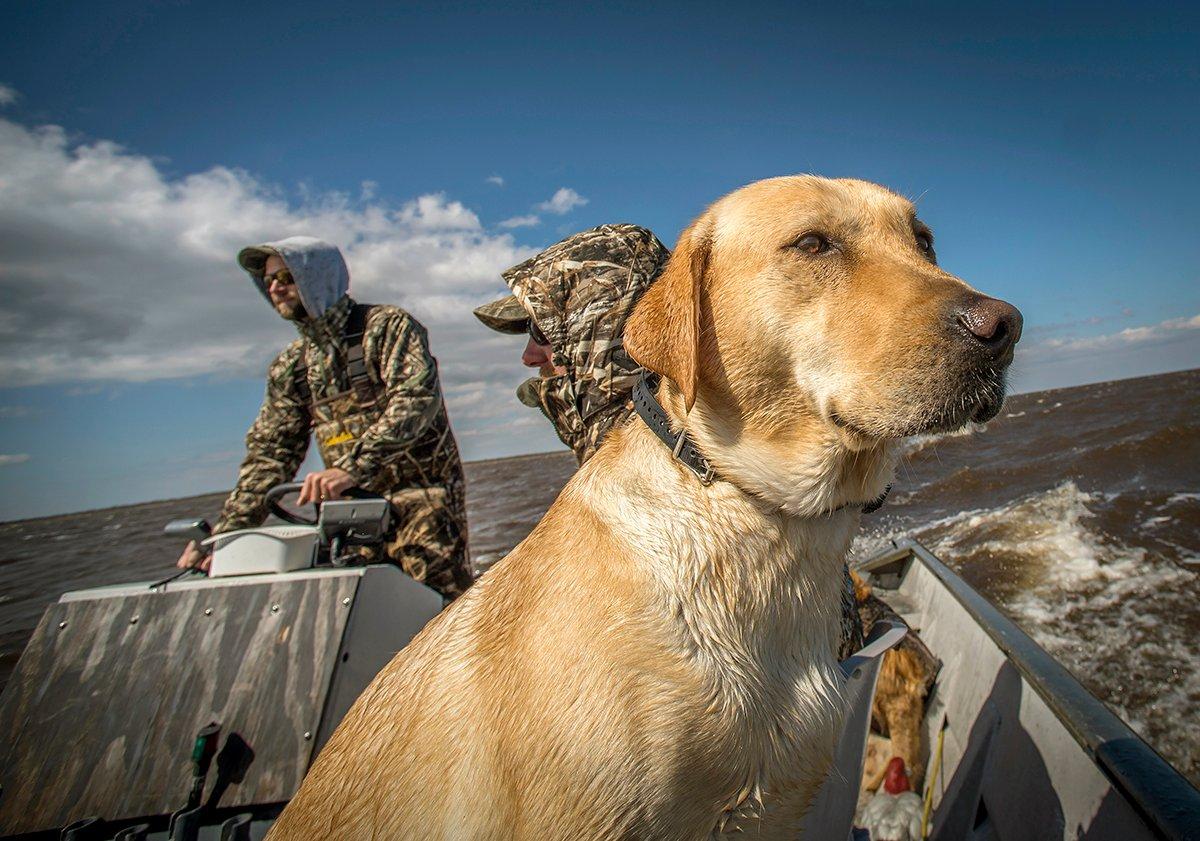These advanced quick-hitting tips might help you score a boat full of divers this fall
You want to run lines with multiple decoys for easier, more efficient storage, deployment and pickup. Will those attract divers as well as single-rigged blocks?
Multiple-decoy lines let you set large spreads quickly and efficiently, but they can lose some effectiveness during calm conditions or when ducks have endured heavy hunting pressure with similar rigs. When there's little chop on the water, those decoy lines look like, well, lines. And that's unnatural. Likewise, if bluebills and their brethren have run several multiple-line gauntlets and felt steel whiz past their behinds, they won't finish well to similar spreads and might even flare while passing by.
Often, it's wise to break up the straight, even appearance of your lines. Let the lines bow and bend a bit in a slight crosswind before setting the anchors. Drop a few singles between the lines and especially around the boat blind or layout boat. Use V-boards near the kill hole to give the appearance that several birds have just landed. Or, use newfangled mesh decoy mats — to which you can attach several decoys in random patterns — in conjunction with lines to give the appearance of a natural, jumbled raft of divers.
Will decoys of one species attract most diving ducks?
In many situations, you can probably do well using only bluebill or canvasback decoys. Both feature lots of white for attraction, and most other divers associate with 'bills and cans. It makes sense, however, to mimic the predominant species in the area. If you're on the Mississippi River, a can-heavy spread looks more natural, for example.
Goldeneyes are the main exception to this rule, as they typically prefer to associate with their own species. During the late season, when whistlers become the most common birds on big water, it's wise to switch to a goldeneye-heavy rig. It will help them finish better. Also, remaining 'bills, cans, buffs and other divers will decoy to goldeneye fakes.
Folks also bicker about drake-to-hen ratios in diver spreads. Some high-profile guides use nothing but drakes, claiming the brighter colors provide more attraction. Others insist that hens mixed with drakes provide an important dark-against-white contrast, which looks natural. The solution? Try both approaches, and see what works best.
You glass a massive slick of divers most evenings in open water, and the birds seem to filter toward rock reefs or vegetation-choked flats every morning. What's the best spot to hunt them?
First, avoid temptation to set up at the roosting area in the evening. Hunting the bedroom usually results in one great shoot and several subsequent days of frustration, as you'll blow ducks out of the area. Hunting near feeding areas can be productive, but you'll eventually burn those out, too. It's best to set up where ducks fly to and from roosting and feeding areas, much like a bowhunter sets up between a buck bedding area and a food plot. That way, you'll be in their line of flight but likely work and shoot into smaller groups, thereby spooking fewer birds.
In a situation opposite to the previous scenario, you see divers massing near bays or reefs during evenings, but they vanish by morning. What's happening, and what can you do?
Those ducks are likely feeding at night. Don't believe it? It's been well documented, and it's a direct response to human hunting and boating pressure. The best — maybe only — solution is to set up during afternoons along flight paths ducks use to access those nighttime feeding areas. That can be tricky, as ducks switch patterns subtly in response to wind and pressure. However, if you hit it right, you can decoy a few early arrivals, kill your birds, and get off the water before the main flight arrives. Often, the best action occurs during the final hour of daylight. During cold or otherwise inclement weather, birds might fly earlier.
The divers we hammered last week seem to have disappeared. Any clues on where they went?
Probably somewhere where they won't get hammered. Barring a migration event, diving ducks often shift roosting areas, food sources and travel routes to avoid being flushed by boats or shot at by hunters. Scouting, of course, provides the best remedy.
Glass as many spots as possible to note where birds seem to fly and raft during various wind conditions. If you're hunting a pressured area, pay special attention to bays or channel arms far from boat landings. Above all, be persistent. Divers that seemingly disappear for a week can reappear at the opposite end of the lake and offer fresh hunting opportunities.
(Buy alert: Realtree Max-5 Camo Short Sleeve Performance Shirt)
Click here for more Realtree waterfowl hunting content. And check us out on Facebook.








